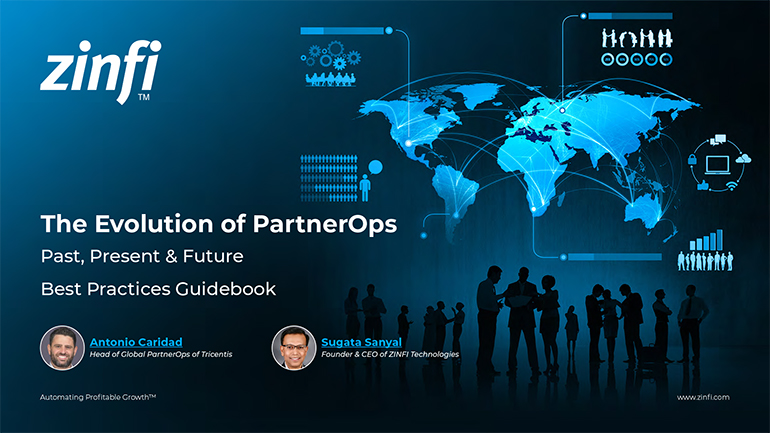Glossary - What is - Ecosystem Optimization Tools
What are Ecosystem Optimization Tools?
Ecosystem optimization tools are software solutions that enable businesses to enhance the performance, efficiency, and collaboration within their partner ecosystems. These tools streamline key processes, such as onboarding, communication, performance tracking, and incentive management, creating a unified and productive network of partners, including resellers, distributors, and service providers.
Ecosystem optimization tools are critical for scaling operations, fostering transparency, and aligning partner activities with organizational goals in partner ecosystem management. By integrating with existing systems like Customer Relationship Management (CRM) and analytics platforms, ecosystem optimization tools provide actionable insights and drive data-driven decision-making for sustainable growth.
Key Takeaways:
- Centralized Partner Management: Ecosystem optimization tools centralize all partner-related data and processes, offering businesses a unified view of their network and simplifying partner relationship management.
- Streamlined Onboarding Processes: These tools automate partner onboarding by collecting, verifying, and managing partner data efficiently, accelerating their readiness to contribute to business goals.
- Performance Tracking and Analytics: Ecosystem optimization tools provide real-time dashboards and detailed analytics to monitor partner activities, track sales performance, and measure campaign effectiveness.
- Enhanced Communication and Collaboration: Integrated communication tools facilitate seamless partner interaction, enabling timely updates, feedback collection, and collaboration on marketing initiatives.
- Customizable Incentive Programs: These tools allow businesses to design and manage incentive programs tailored to partner performance, driving engagement, motivation, and loyalty.
Summary of Key Takeaways:
Ecosystem optimization tools are essential for organizations seeking to streamline partner management processes, enhance collaboration, and maximize ROI. By integrating key functions like onboarding, communication, analytics, and incentives, these tools help businesses build scalable, high-performing partner ecosystems. ZINFI’s solutions offer customizable and robust features tailored to various industries, ensuring operational efficiency and long-term success.
Key Examples:
- Automotive Manufacturing: Automotive companies use ecosystem optimization tools to monitor dealership sales, track inventory, and manage customer satisfaction scores, ensuring operational alignment.
- Consumer Electronics: Electronics brands rely on these tools to provide retailers with training, co-marketing resources, and analytics for successful product launches and market penetration.
- Energy Production: Energy firms utilize optimization tools to manage contractor compliance, monitor project timelines, and evaluate efficiency, ensuring adherence to safety and regulatory standards.
- Financial Services: Banks and insurance firms employ these tools to manage broker networks, track client acquisition rates, and assess lead conversions for enhanced productivity.
- Food and Beverage: In the food and beverage industry, ecosystem optimization tools monitor distributor performance, streamline delivery processes, and measure promotional campaign success.
- Healthcare Services: Healthcare providers use these tools to manage supplier compliance, track inventory, and evaluate distributor contributions, ensuring operational efficiency and regulatory adherence.
- Information Technology: IT companies depend on optimization tools to monitor reseller deal registrations, manage certifications, and analyze campaign participation for improved channel growth.
- Pharmaceutical Development: Pharmaceutical firms use these tools to track distributor compliance, evaluate new treatment adoption, and align operations with regulatory requirements.
- Retail Industry: Retailers leverage these tools to optimize supplier relationships, track inventory turnover, and measure the effectiveness of co-marketing efforts.
- Telecommunications: Telecom providers rely on ecosystem optimization tools to track reseller activities, monitor subscriber acquisition, and manage training programs for consistent channel performance.
Conclusion:
Ecosystem optimization tools are critical for businesses looking to enhance the performance of their partner ecosystems. By automating workflows, enabling real-time performance tracking, and fostering collaboration, these tools align partner activities with business objectives, driving mutual success and sustainable growth.
Industries like automotive, IT, and healthcare demonstrate the transformative value of these tools. Automotive manufacturers use them to monitor dealership operations, IT companies leverage them to track reseller contributions, and healthcare providers use them to ensure compliance and optimize supplier activities.
ZINFI’s ecosystem optimization tools offer advanced, scalable features designed to meet the challenges of managing diverse partner networks. By adopting these solutions, businesses can improve transparency, enhance partner engagement, and achieve operational excellence.
Associated Keywords:
- Partner Management Solutions
- Channel Ecosystem Software
- Optimization Tools for Partner Networks















